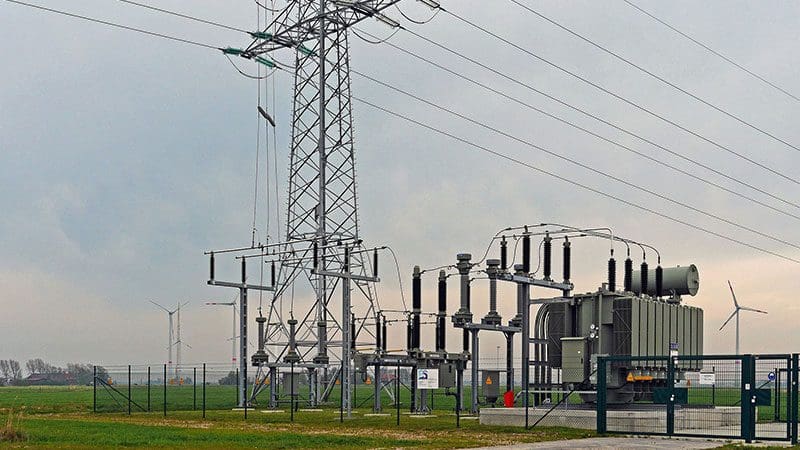Saving the energy transition trillions
Grid reinforcement solutions are a necessity for an affordable, secure energy transition. On its current course, the energy transition is simply too expensive and will lead to unreliable and fragile grids. Storelectric can change all that. To save the first tens or hundreds of billions per grid, start by building plants and integrated developments. But to save the big money, regulatory systems and grid management need to change substantially world-wide.
Grid Reinforcement Solutions for Renewables
Jeremy Warner of the Daily Telegraphs writes, drawing from National Grid, “to convert the electricity grid from its current profile to 100% renewables will require a grid five times its current size”. This is totally un-feasible.
Today’s grid has 76.6GW generation. As it’s close to saturation, call it (generously, for this analysis) an 80GW grid. Quintupling it means adding a further 320GW grid capacity. But figures worked out from an Ofgem announcement late December 2022 show that each GW of new grid capacity costs £3bn approximately, rising exponentially. That means £960bn, a shade under a trillion pounds. However, this £3bn/GW is increasing rapidly: just two years before, it was ~£1.75bn/GW.
And grid capacity has operational, maintenance (O&M) and finance costs too. In the same article, National Grid’s official O&M costs amount to 5% of capital costs, plus another 5% for financing and amortisation. That means additional costs rising to £96m per annum, taking it way beyond the trillion pounds.
Storelectric’s grid reinforcement solutions can avoid much, possibly most of this, by connecting renewables to the grid through CAES. This is the world’s most efficient and cost-effective widely implementable long duration energy storage (LDES). Eliminating intermittency with storage reduces the grid size from “peak generation” to “peak demand,” already meeting demand, making reinforcement local.
Grid Reinforcement Operational Costs
Those O&M costs are for the hardware of the grid itself: the wires, substations etc. System Operation is about procuring the:
- Power quality services that grids’, service providers’ and consumers’ equipment needs to operate smoothly, efficiently and with minimum wear-and-tear;
- Balancing services for intermittency;
- Stability services to prevent faults cascading and multiplying through the grid as they did on August 19th 2019;
- Ancillary services to recover from problems; and
- Restoration and Black Start services in case of even greater problems.
In 2022 I looked at those system operation costs: they were £8bn p.a. more in 2021-22 than just three years before, with every element increasing exponentially. There is no way of foreseeing where this exponential price escalation will end; no modeller was able to predict it thus far. Given that the £8bn cost increase came from increasing renewables from 16% of all electricity to 38% (see p30 here), a floor of £50bn p.a. would not be an unreasonable guesstimate.
The principal reason for this is a reliance on batteries and other small-scale services such as Demand Side Regulation (DSR). Almost none of these services is naturally inertial. They provide services in locations remote from the renewable generation they support. Some services are inferior when produced by DC systems, even with grid-forming inverters. Some services, like Black Start, are impossible. If systems providing such services were naturally inertial, they would be provided cheaply, easily, and more manageably.
Previous Grid Functionality
Think back to the grid before 2010, naturally powered by inertial power stations. Natural inertia meant ultra-fast response times weren’t necessary. Millions of micro-contracts for small-scale services were unnecessary. Grid control and operation was relatively simple, efficient and cheap. The whole lot cost billions less per annum, and was much more stable, reliable and resilient than today’s grid.
Renewables connected via suitable-scale LDES function like traditional power stations, providing dispatchable electricity with necessary services for grid reinforcement.
Grid reinforcement in the Hydrogen Economy
All the above is about powering the electricity grid. Supporting a clean hydrogen economy will incur additional costs.
Clean hydrogen, in all its forms (electrolysis, SMR + CCS etc.) needs large amounts of electricity. So do all the related industries, e.g. nitrogen fixing, ammonia synthesis, methanol synthesis, iron and steel. Even if the hydrogen economy is half the size of the expanded electrically-powered economy, it requires an additional 250% of today’s grid, equating to 200GW @ £3bn/GW = £600bn capital costs, £60bn p.a. network operation costs, and at least another £25bn p.a. system operation costs.
Sufficient LDES in the system can reduce these costs by about a third or more. If the LDES is positioned between renewables and hydrogen economy industries, mitigation can increase to between half and two-thirds. Implementing Storelectric’s integrated solutions, alongside the company’s Green CAES™, to power the majority of the hydrogen economy with renewables in “island grids” can eliminate most of these additional costs.
The potential savings from grid reinforcement solutions
So the total electricity system network and system costs of the energy transition, without Storelectric’s grid reinforcement solutions, is over £1.5 trillion capital costs and £225 billion per annum ongoing costs, for the UK alone. This is unaffordable and impractical, and even so it yields a much weaker and more fragile energy system. And this is additional to many billions more in unnecessary system operation costs, above, and ignores the fact that each and every one of these elements is increasing rapidly and with no end in sight to any aspect of this cost growth.
Full implementation of Storelectric’s proposals can slash these costs by two-thirds to three-quarters, ensuring a more affordable, reliable, and resilient energy system.
And the UK is only 0.7% of the world’s population, not much more than 1% of its energy consumption. Therefore, world-wide, the potential costs and benefits must be multiplied by 100-140 times.
Achieving the Savings
However to achieve the fullness of these savings requires some strong and decisive actions by the government, regulator and grid, including:
- Adapt the regulatory and contracting system to incentivise it at no extra cost to consumers or taxpayers;
- Incentivise first-of-a-kind plants and arrangements for all technologies that can operate commercially without subsidy. Offer up-front contracts for the full revenue stack. Provide a lead time suitable for its needs. Again, ensure no cost to consumers or taxpayers.
- Optionally, if the country wishes to encourage more new technologies, public funding schemes may be added to the above two measures. Note that if the first two are also applied, the amount of public funding will greatly reduce.
The best and fairest way to pay for all of this, which would be revenue positive for governments, avoid penalising domestic growth and maximise incentives for the energy transition, is an Emissions Added Tax. It would also provide a surplus to mitigate the needs of those who lose out in the energy transition, especially the poor who, in turn, should be assisted directly and not by reducing their energy costs as that would blunt incentives.
What if we fail to introduce grid reinforcement solutions?
If we fail to make these savings, the entire energy transition could be unaffordable, unreliable and fragile, losing the battle against climate-change sceptics and budget hawks to the eventual destruction of this planet’s habitability.
With such technologies / solutions, of which Storelectric’s is head-and-shoulders the best where appropriate, the energy transition will be affordable, reliable and resilient.
Moreover, we can democratise clean energy. Less-developed countries can leapfrog more-developed ones into clean energy, just as they did into mobile telephony. Currently energy-assistance is mostly about delivering energy to clinics, schools and homes: making penury more comfortable. Our scale of storage enables the clean energy to drive cities and regions, including their infrastructure and industry, so addressing the penury itself.


